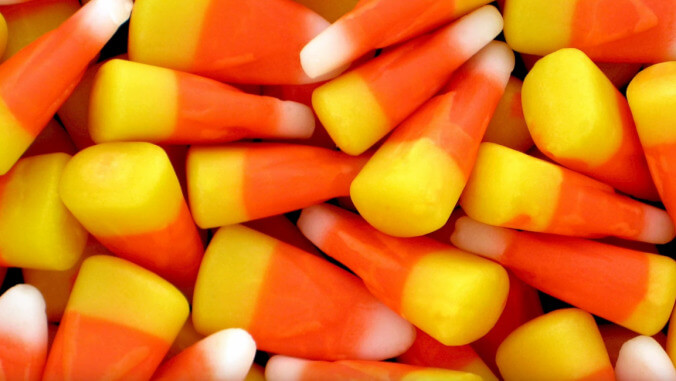Sink your teeth into a history of everyone's least favorite Halloween candies
A look at how candy corn, black licorice, and circus peanuts came to be

Although it’s clear that there are few better Halloween treats than a pile of tooth-shaped clumps of sugar wax, some insist on arguing against the merits of candy corn every year. It’s a perennial controversy, sometimes taken to such extremes that candy corn manufacturers must ward off ransomware attacks to protect their ability to provide those of us with properly calibrated taste buds with our precious sweet kernels.
Eager to uncover the origins of this polarized candy climate, YouTube’s The History Guy looked at where a trio of “controversial candies”—candy corn, circus peanuts, and black licorice—came from and why, despite our inability to collectively enjoy them, they’ve endured over the years.
Candy corn, probably the most famous of these three, goes all the way back to the late 1800s and, according to one popular story, was created by a German immigrant to Philadelphia. They started off shaped as “acorns, turnips, and pumpkins” and gained popularity toward the end of the 19th century, when they were called “chicken feed” or “chicken corn.” Candy corn was a pain to make, but remained in demand throughout decades and decades until eventually becoming linked with Halloween in the 1950s, when trick ‘r treating became common in the United States.
The video also explains that black licorice has long been used as medicine across the world, but became really popular as a candy when sweets companies began branding and producing it (alongside other licorice flavors, like the considerably less gnarly “red”) in large quantities during the 19th century.
It’s managed to persist in the many years since, just like circus peanuts, whose inventors, we learn, are unknown. After the circus peanut’s creator presumably disappeared cackling into the night, the candy’s been made by various businesses going back to the 1800s. Mysteriously, nobody is entirely sure why they were dubbed “circus” peanuts, why they taste sort of like artificial banana, and why they’re colored a pale orange.
As for why each of these divisive candies has remained so popular, the History Guy believes that we just love arguing about whether or not they’re good and that, more importantly, we like the idea of these candies enduring over the centuries, even if we don’t actually want to eat them.
[via Digg]
Send Great Job, Internet tips to [email protected]